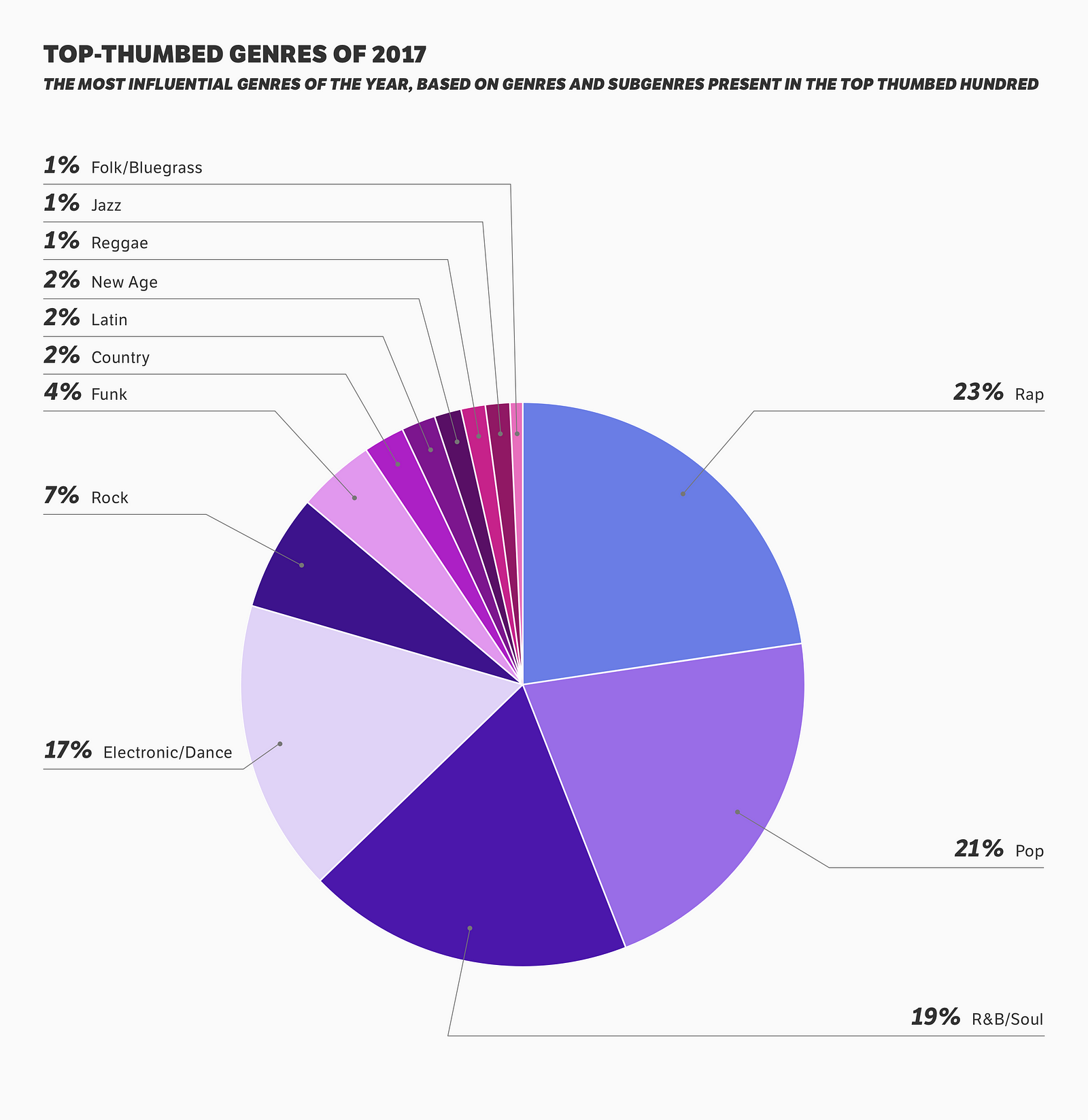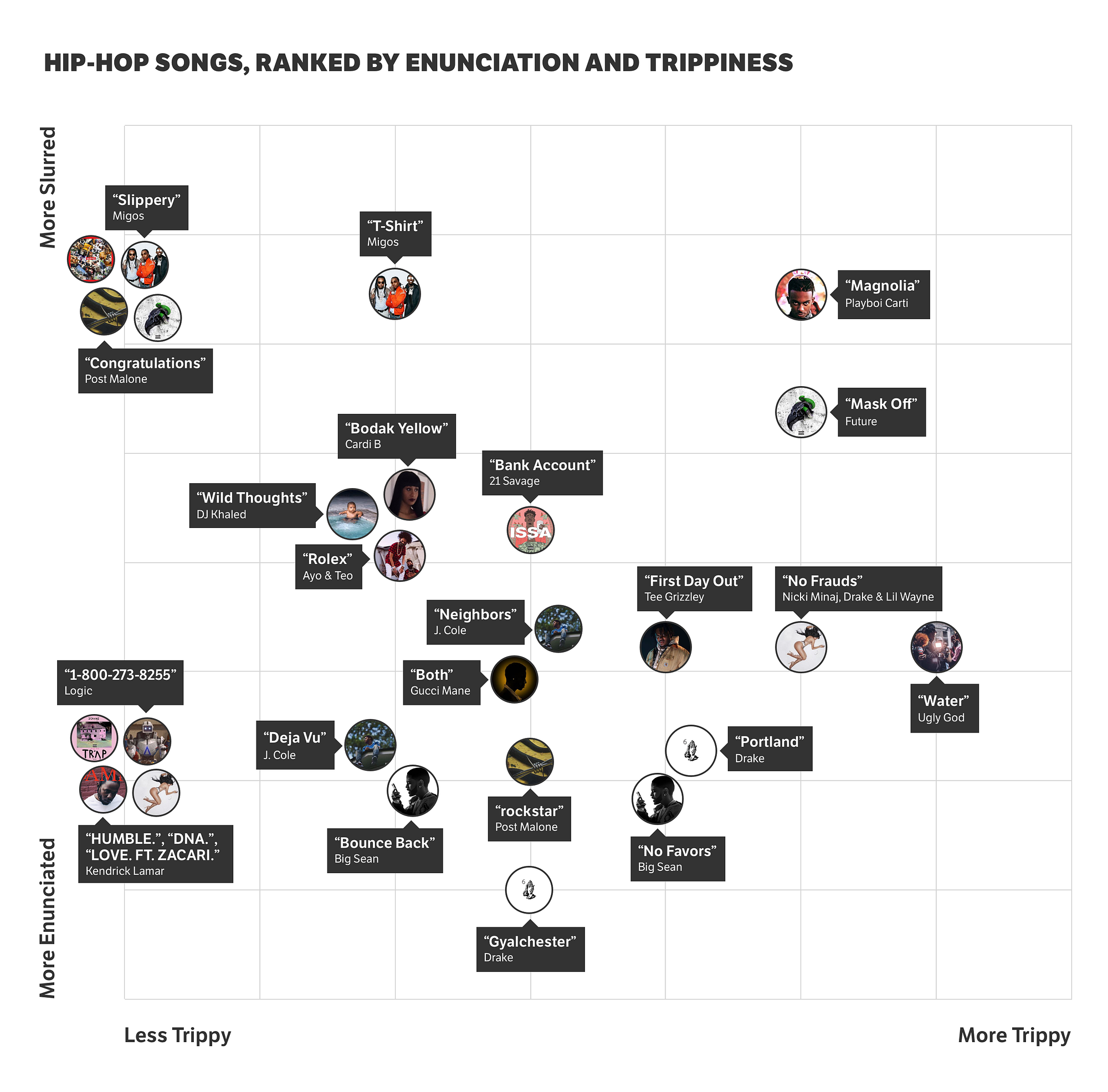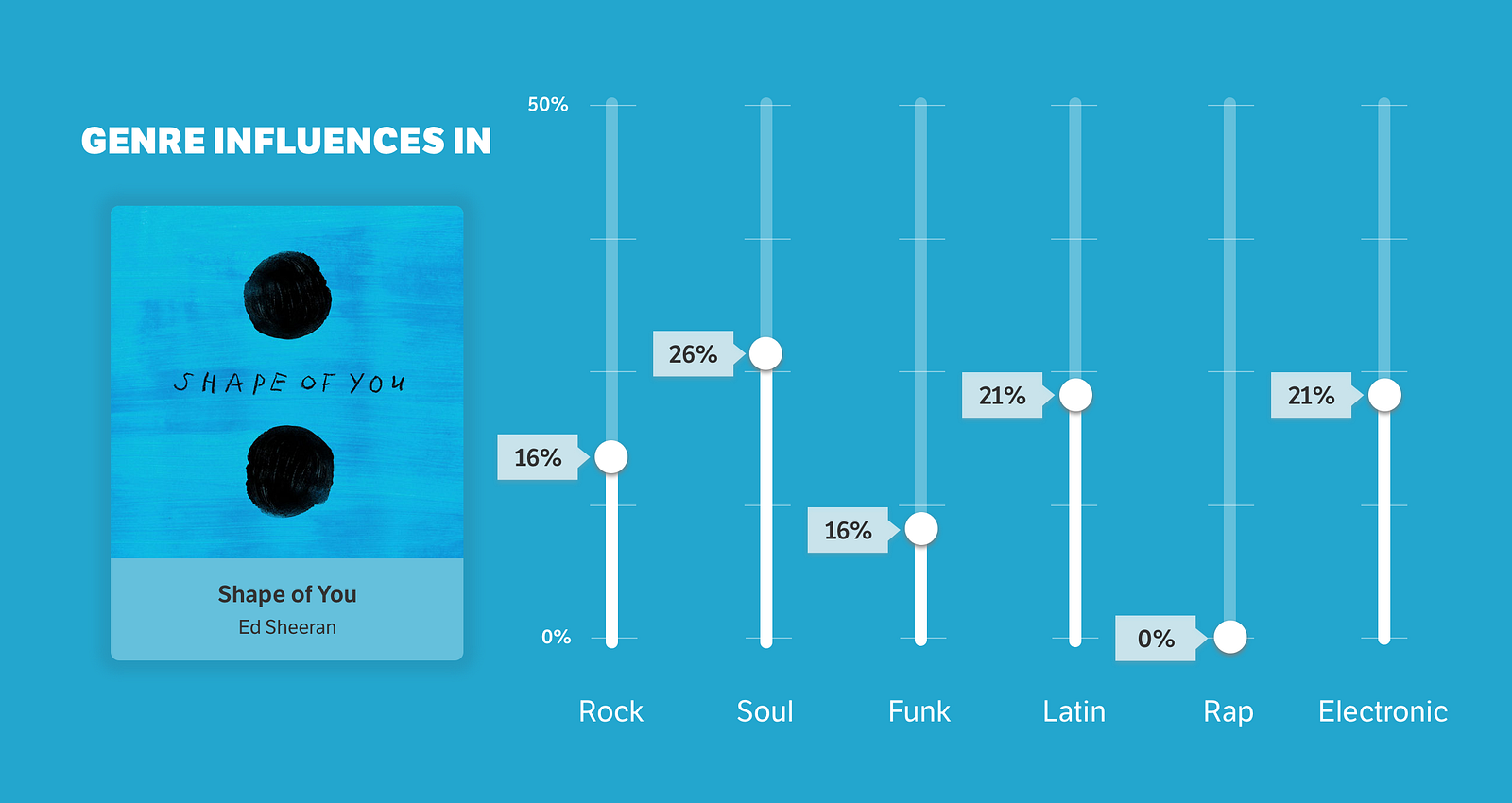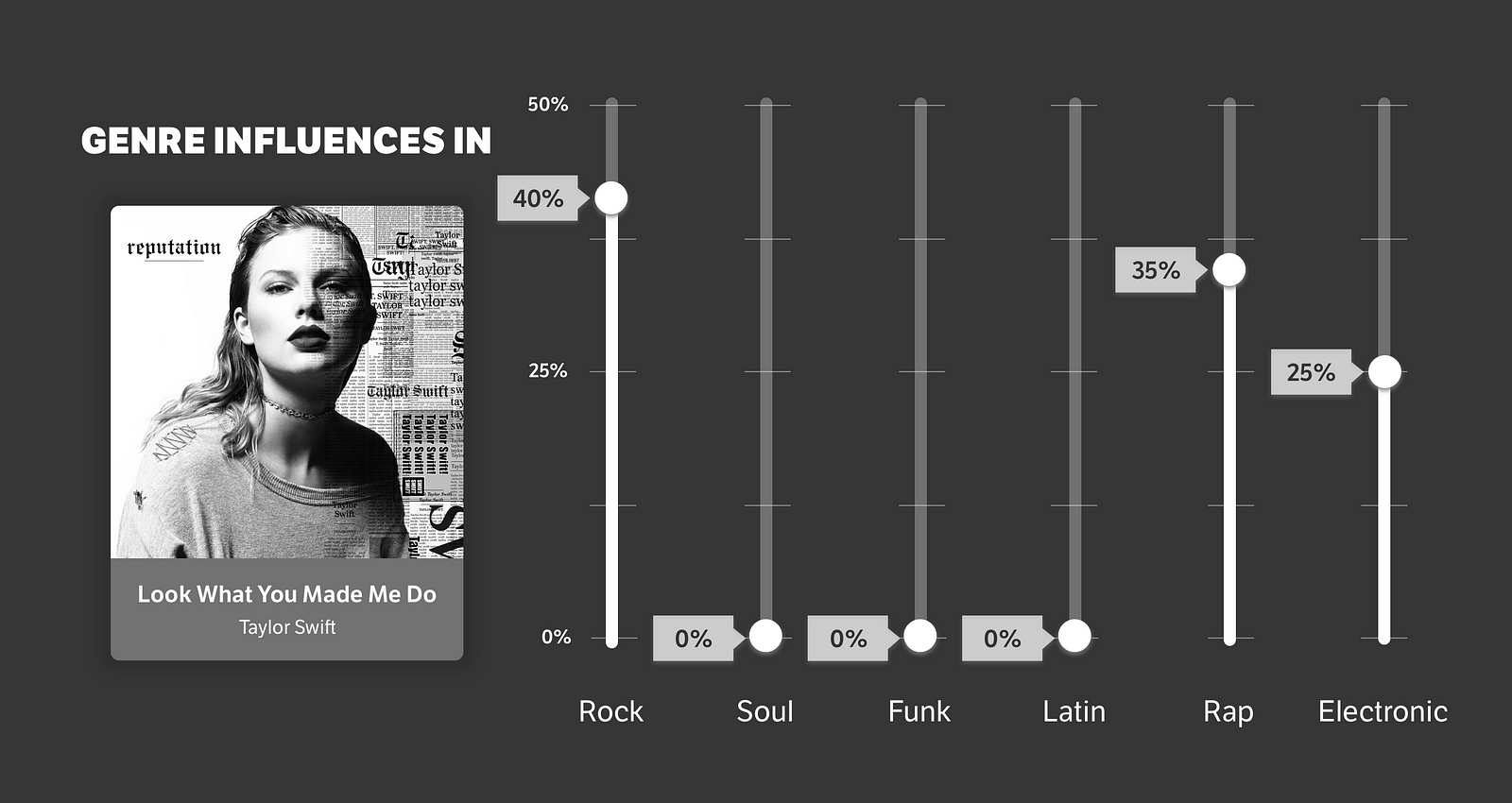What Pandora’s Genome Can Tell Us About The Sounds Of 2017
Here we look at breakdown of popular music on Pandora from a genre-based angle and how streaming, in addition to bringing in a majority of the revenue in music, is also reshaping the music itself, and allowing a more diverse group of artists and musical influences to reach listeners.
________________________
Guest post by Emily Blake of Next Big Sound

We’ve known for a while now that in the ragtag family of the music industry, streaming is the breadwinner. Streaming overtook digital downloads to become the leading source of revenue back in 2015. And that revenue keeps growing — thanks in large part to an increase in paid subscriptions to streaming services. The fact that streaming is the one as making money moves is old news.
What we had yet to grasp until recently, however, is how streaming services like Pandora are changing the music itself with a more diverse group of artists with a more diverse array of musical influences getting mainstream attention. Pre-streaming, Luis Fonsi and Daddy Yankee’s “Despacito” likely wouldn’t have become the massive summer sensation it was. Drake definitely wouldn’t have called his 22-track project, More Life, a “playlist.” And exotic dancer/reality TV star Cardi B probably wouldn’t have stood a chance at dethroning charts darling Taylor Swift from the top spot on the Billboard Hot 100.
In that spirit, we’re looking back on 2017 but by examining the music of 2017 on a sonic level. And we’re doing it all using data from Pandora’s Music Genome, which assigns hundreds of characteristics to each song on the streaming platform. Using the Top Thumbed Hundred — the 100 most thumbed up tracks on Pandora over the past year — we looked at a variety of characteristics like subgenres, mood, instruments present, and BMP to get a comprehensive, data-driven and totally nerdy look at of the sounds of 2017.
Latin Music Shakes Up The Mainstream
There’s much to discuss on music in 2017, but the pop music history books — of which there are very few, apparently — will likely remember it as the year of “Despacito.” Luis Fonsi and Daddy Yankee’s reggaeton-pop track became the first mostly Spanish language single to top the Billboard Hot 100 since “Macarena” after a remix featuring Justin Bieber was released in April. Beyond that, “Despacito” was arguably the biggest song of the year, Latin or otherwise, becoming the most-streamed song of all time in July. To date, the original version of “Despacito” and its remixes have seen around 270 million spins on Pandora and comes in at #4 on the Top Thumbed Hundred. And the “Despacito” fever proved to not be an anomaly when J Balvin’s “Mi Gente” — featuring a part-Spanish, part-English appearance from Beyonce — hit #3 on the Hot 100 in September
Marcos Juarez, head of Latin programming at Pandora, says that while Latin music has had a strong influence on mainstream music for decades, the prevalence of this much Latin music actually sung in Spanish is unprecedented. (Even Bieber sang partially in Spanish on his “Despacito” verse._
“U.S. listeners are some of the only listeners who don’t listen to music in other languages, but that might be shifting,” Juarez said. “I think this has been a gradual process of Latin music mainstreaming. General market audiences are hearing those sounds and becoming more comfortable hearing Spanish.”
“Mi Gente” and “Despacito” weren’t the only Latin tracks that made it on the Top Thumbed Hundred. Even without the co-signs of a Bieber or a Beyoncé, four other Spanish-language tracks managed to make it on the list all on their own. There’s “Adios Amor” (#63), the debut single from Mexico native Christian Nodal, a self-proclaimed “mariacheño” singer and Pandora Trendsetter; “El Amante” by reggaeton star Nicky Jam (#28); “Felices Los 4” by reggaeton-pop newcomer Maluma (#89); and “Escapate Conmigo” by Puerto Rican artist Wisin (#91). Six out of 100 isn’t bad, especially when you consider that there were no Spanish-language songs at all on last year’s Top Thumbed Hundred.
Hip-hop Gets Trippy
Up-and-coming rapper Lil Xan may not be on the Top Thumbed Hundred, but he’s a good snapshot of rap in 2017, says Chris Horgan, hip-hop analysis manager at Pandora. The 21-year-old’s got a druggy sound, a druggy name to match, a reliance on slower tempos and a laid-black flow that’s more singing than rapping.
The way Horgan sees it, rappers used to prove their credibility via stories of street or gang life, but now, “it’s about the drugs you do.” The sonic result is a more trippy sound, with more words more slurred than enunciated.
Here’s a look at the hip-hop songs on the Top Thumbed Hundred, ranked on their “Trippiness” and enunciation. Trippiness — which isn’t technically a word — includes qualities like heavy reverb/delay and a lot of repetition. As you can see, Playboi Carti opts for a more slurred delivery of vocals, while artists like Kendrick Lamar are more enunciated:

That druggy sound also often coincides with a more laid-back tempo, which likely explains why the rap songs appearing on the Top Thumbed Hundred were around 60–65 BPM, while other genres averaged closer to 80 BPM. And yet, as Horgan points out, that doesn’t stop these songs from becoming party songs.
“Right now the formula for a club song is something like ‘Mask Off,’ which definitely would not have been the formula five years ago,” Horgan said of the standout track off Future’s self titled album, which comes in at #5 on the Top Thumbed Hundred. “But you put that on in the club and people go crazy.”
The highest tempo rap song to make the list was Logic and Alessia Cara’s “1–800–273–8255” (#22), which isn’t exactly an upbeat banger, considering it’s lyrically about a person considering suicide. The slowest? It’s a tie between Kendrick Lamar’s Rihanna-featuring “LOYALTY” (#24) and J. Cole’s “Déjà Vu” (#15).
The Flute Finds Its Stage… In Trap
If you’ve had your ear tuned in to underground rap over the past few years likely could have predicted hip-hop taking a druggy turn this year. But the flute becoming an MVP in trap? The gentlest of woodwinds becoming one of the key players in songs about molly, Percocet? You probably didn’t see that coming. Unless, that is, you were one of those people paying really close attention, like JBoogie, head of Hip-Hop Programming at Pandora.
While the so-called “trap flute” popped up in a few 2016 songs like 21 Savage and Future’s “X,” JBoogie notes that 2017 was the year it took center stage. In likely its biggest moment since “Anchorman” — nay, bigger — the flute was the star of Future’s “Mask Off,” on which producer Metro Boomin features a flute sample of Carlton Williams’ “Prison Song.” The track prompted a flurry of flute-y memes, all while the song hit #5 on the Hot 100, marking Future’s highest appearance on that chart to date.
Flautists everywhere, rejoice. You’ve been waiting for this.
Pop Has A Bit Of An Identity Crisis
When we looked back on 2016 in music, pop was still the most prominent genre, based on genres and subgenres present in that year’s Top Thumbed Hundred. This year, hip-hop pulled ahead of pop as the most influential genre — which isn’t surprising when you consider that this was also the year thathip-hop and R&B became the most popular genre in terms of overall consumption.
So what happened to pop in 2017? In terms of the pop as we knew it, not much, says Tiana Lewis, head of pop programming at Pandora. She noted a shift away from the tried-and-true formula of bubblegum pop songs like “Teenage Dream.” And if they did stick to the formula? For the most part, they didn’t perform well.
Most of the pop songs on the Top Thumbed Hundred take one of two paths away from the pop norm: Leaning heavily on genres like hip-pop, soul, and rock, or continuing in the EDM-influenced “pop drop” songs of 2015 and 2016.
Take Ed Sheeran’s “Shape of You,” #1 on the Top Thumbed Hundred, which is technically a pop song, but mixes elements of Latin, electronic and soul:

Or Taylor Swift’s “Look What You Made Me Do” (#59), which — like other songs off her sixth studio album, Reputation — leans heavily on hip-hop and rock:

“Feel It Still” (#49), is by far the poppiest single so far from Portugal. The Man, and also their first single to to hit the Hot 100. But it’s also got a lot of rock, a lot of soul, and a lot of funk:

Lewis also pointed out the frequency with which pop singers were featured on an EDM artist throughout the year. Examples include “It Ain’t Me,” by Kygo and Selena Gomez (#29) and Cheat Codes’ “No Promises” featuring Demi Lovato (#79).
“The producer/DJ is just as much the talent as the singer is,” she said. “It’s more of a collaborative effort, that wall is broken down.”
Country Gets Gets A Little Edgy
While the country tracks on the Top Thumbed Hundred are between PG and PG-13, Rachel Whitney, head of Country Programming at Pandora, says streaming has sent a message to country artists: It’s OK to be a little more R.
Looking at Pandora’s Genome for explicit/offensive music, established country acts like Tim McGraw, Kenny Chesney score very low, but newer acts like like Kacey Musgraves and Maren Morris are starting to push that score a little higher. And a lot of that, Whitney says, is because of this: While country radio may not play edgier tracks, there seems to be a hunger for it on services like Pandora.
Case in point: Dustin Lynch’s “Back On It,” which the Tennessee native refers to as “the cocaine song.” Even though it’s not technically about cocaine — rather comparing a romance to a drug — the fact that the word “cocaine” is even uttered is a risqué for the genre, Whitney says. “Back On It” has seen over 200,000 spins on Pandora to date. On radio, it’s seen one, according to data from Nielsen.
Whitney points to Maren Morris’ 2016 track “Rich” as a predecessor to “Back On It.” The song, on which Morris says the word “shit” three times, marked the first time she released a single without releasing it to radio. The song’s seen over 1.8 million spins to date on Pandora.
So there you have it. In 2017, hip-hop overtook pop as the most influential genre, Spanish-language single shook up the charts, and flutes reigned.
Visualizations by Anabelle Zee.
So depressing.
Jazz is only 1%.
Classical isn’t even the list.